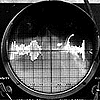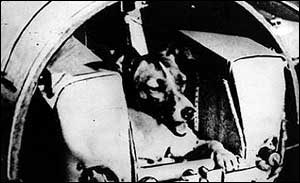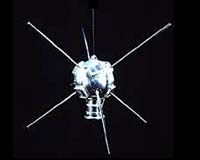Sputnik: First Artificial Satellite
|
Share This Page
|
|
|
|
|
|
|
Follow This Site

|
 |
|
|
On October 4, 1957, the Soviet launched the world's first artificial satellite, Sputnik, from the Baikonur cosmodrome in Kazakhstan.
 The tiny spacecraft orbited Earth once every 90 minutes and was set to broadcast at frequencies of 20 and 40 Mhz. It wasn't long before anyone who could listen to those frequencies heard the telltale beeps that signified the Soviets' giant leap forward into the space race.
The tiny spacecraft orbited Earth once every 90 minutes and was set to broadcast at frequencies of 20 and 40 Mhz. It wasn't long before anyone who could listen to those frequencies heard the telltale beeps that signified the Soviets' giant leap forward into the space race.
Panicked government officials of the United States and other countries worried about Soviet missiles falling from weapons factories in the sky. The U.S. Government, of course, had military intelligence photos showing the launch preparations and were not at all surprised at the launch; the  gathering of that intelligence could not be revealed, however, and so the "Missile Gap" idea was let loose on the world. Soon after Sputnik became Sputnik 1, to make way for Sputnik II, which weighed about five times more and carried a live dog, Laika (left). The American response, Vanguard, crashed out and continued worries of Soviet domination in space.
gathering of that intelligence could not be revealed, however, and so the "Missile Gap" idea was let loose on the world. Soon after Sputnik became Sputnik 1, to make way for Sputnik II, which weighed about five times more and carried a live dog, Laika (left). The American response, Vanguard, crashed out and continued worries of Soviet domination in space.
 A year later, Vanguard I made it into orbit. The space race was joined. Subsequent launches followed, in both countries, with the relevant propaganda flowing freely as well.
A year later, Vanguard I made it into orbit. The space race was joined. Subsequent launches followed, in both countries, with the relevant propaganda flowing freely as well.
In the end, it was an American spacecraft that won the race to the Moon. Still, Sputnik served as a wake-up call for American scientists and bureaucrats who had taken their supposed technological superiority for granted.